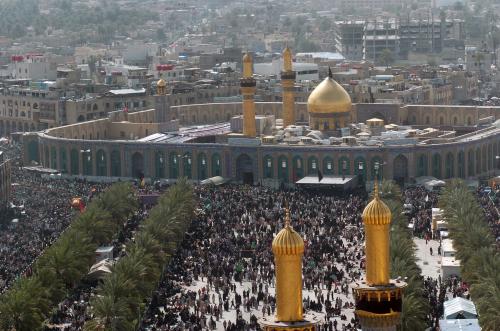 I don't know about you, but I'm getting much of my news about Iran from Twitter. This weekend, many of the Tehran-related items were about Neda, a protesting woman who was killed with a shot to the chest. I have chosen not to watch, but there are graphic videos of the death. As those of us outside Iran are struggling to understand all of the social, political and religious nuances at play there, I must comment Robin Wright's article in Time about the death's consequences to the struggle there:
I don't know about you, but I'm getting much of my news about Iran from Twitter. This weekend, many of the Tehran-related items were about Neda, a protesting woman who was killed with a shot to the chest. I have chosen not to watch, but there are graphic videos of the death. As those of us outside Iran are struggling to understand all of the social, political and religious nuances at play there, I must comment Robin Wright's article in Time about the death's consequences to the struggle there:
Although it is not yet clear who shot "Neda" (a soldier? pro-government militant? an accidental misfiring?), her death may have changed everything. For the cycles of mourning in Shiite Islam actually provide a schedule for political combat -- a way to generate or revive momentum. Shiite Muslims mourn their dead on the third, seventh and 40th days after a death, and these commemorations are a pivotal part of Iran's rich history. During the revolution, the pattern of confrontations between the shah's security forces and the revolutionaries often played out in 40-day cycles.
We're not told why the third, seventh and 40th days are significant, but it helps to know. Wright explains how the first clashes in January 1978 produced deaths that were commemorated with mass protests on the 40th day, resulting in new deaths and the 40-day period of mourning cycle eventually resulted in the shah's ouster in January 1979.
Last week, TMatt wrote "it's about time for people in our big newsrooms to start writing about the religious tensions that surround President Mahmoud Ahmadinejad and that are helping to fuel those marches in Tehran (and, maybe, elsewhere in Iran)." This story provides some of that context. We learn that Neda is already being hailed as a martyr and that martyrdom is central to politics in the Shiite tradition:
The first Shiite martyr was Hussein, the prophet Mohammed's grandson. He believed it was better to die fighting injustice than to live with injustice under what he believed was illegitimate rule.
In the seventh century, Hussein and a band of fewer than 100 people, including women and children, took on the mighty Umayyad dynasty in Karbala, an ancient city in Mesopotamia now in modern-day Iraq. They knew they would be massacred. . . .
Because of Hussein, revolt against tyranny became part of Shiite tradition. Indeed, protest and martyrdom are widely considered duties to God. And nowhere is the practice more honored than in Iran, the world's largest Shiite country.
This story has gotten a lot of play throughout the media. But no one's covered it as well as this piece in Time.
Photo of the shrine of Husayn Ibn Ali.
